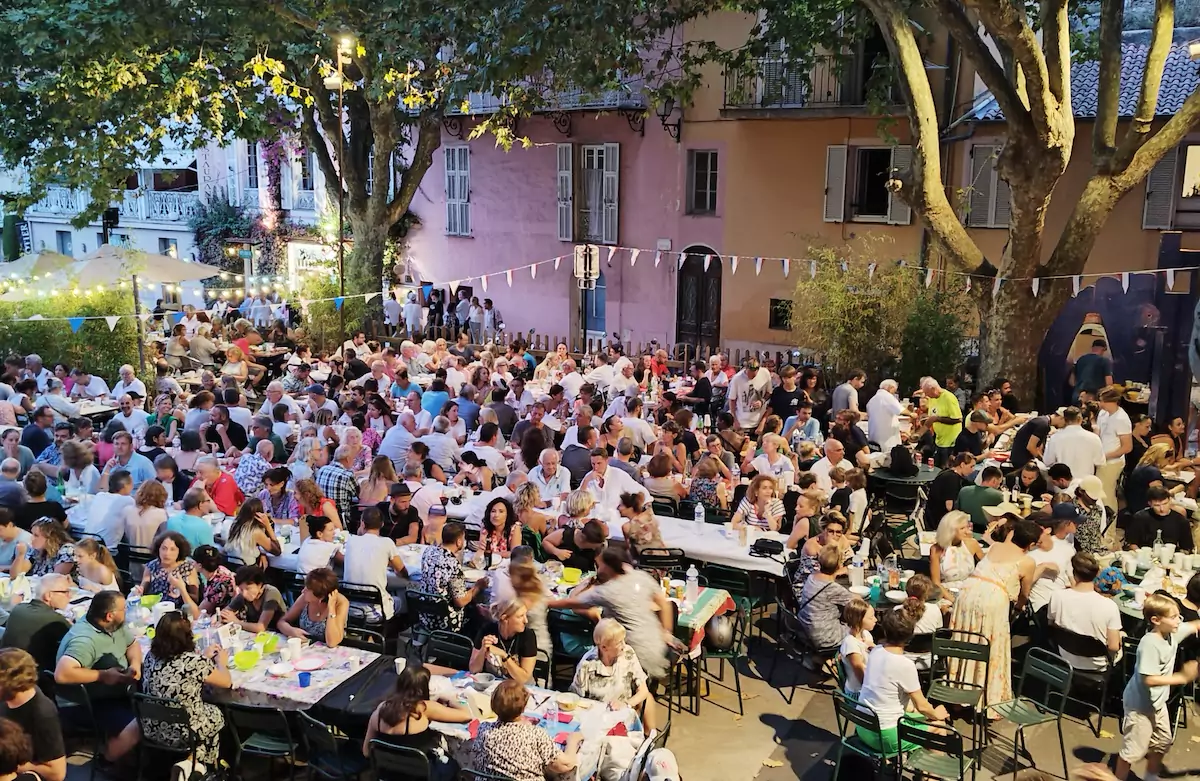Just a short drive from Monaco, the hilltop village of Roquebrune-Cap-Martin is preparing to welcome the summer season with a series of traditional festivities that celebrate its enduring local spirit.
Less than 10 minutes from the Principality, the village of Roquebrune boasts a rich heritage, including a 10th-century château and a thousand-year-old olive tree. From the Place des Deux Frères, named after the twin rock formations that frame the village, visitors are treated to sweeping views of the coast and Monaco beyond. Unlike its more tourist-heavy neighbours such as Èze or Saint-Paul de Vence, Roquebrune has retained much of its French village charm, free of crowds and modern overdevelopment.
Since 1927, this character has been preserved in part thanks to the efforts of the local events association Les Coqs Roquebrunois. The group, made up of about 20 volunteers, organises a seasonal programme of open-air dances and community gatherings from May through to November. Many of its members are lifelong locals and well into their 70s, yet continue to contribute with enthusiasm that reflects the Mediterranean way of life. The group’s social bond is strong—many have known each other since childhood—and a celebratory glass of pastis or whisky is not uncommon once the work is done.
The first of five bals populaires will take place on Saturday 24th May in the Place de la République, the second car park as you enter the village. Entry is free, drinks are sold at local prices, and food is occasionally provided by participating village restaurants. Music begins around 9.30pm and plays on late into the night, as families, couples, and curious visitors dance beneath the plane trees.
In June, the village celebrates the Fête des Genêts, during which children parade in costume and the streets are adorned with yellow blooms from the genêt plant, said in local legend to have saved Roquebrune from disaster during a historic earthquake.
Bastille Day on 14th July brings more community-focused festivities, including traditional games such as sack races, tug-of-war, and musical chairs. Though modern distractions have changed children’s habits, these simple pleasures remain popular. For years, the highlight of the day was a brave plunge into the cold water of the old village lavoir by Jean-Pierre Cognet, former president of the Coqs, though this tradition has now been retired at the request of his wife as he nears 80.
Later in the summer, on 27th July, the Coqs will serve some 3,000 handmade barbajuans, the savoury Monegasque pastry, prepared by villagers of all ages. The day ends with a communal meal under the stars. This is followed in early August by the annual Soupe au Pistou night, when vegetable and pesto soup is served to up to 600 guests, each invited to bring their own bowl and spoon. The event costs just €2 per person.
The season draws to a close in November with the Fête de la Châtaigne, when the village hosts a chestnut festival featuring roasted chestnuts, mulled wine, and Provençal delicacies from market stalls that line the streets. As with so many events in Roquebrune, food, music and conviviality take centre stage.
For more information, visit www.lescoqsroquebrunois.fr, find the group on Facebook, or call 06 22 69 10 37. English-speaking visitors are welcome to contact Richard McCreery directly on 06 17 41 15 61. Newcomers are always welcome at the village’s summer balls—and Les Coqs are always happy to say hello.
Monaco Life is produced by multi-media journalists writing original content. See more in our free newsletter, follow our Podcasts on Spotify, and check us out on Facebook, Instagram, LinkedIn and Tik Tok.
